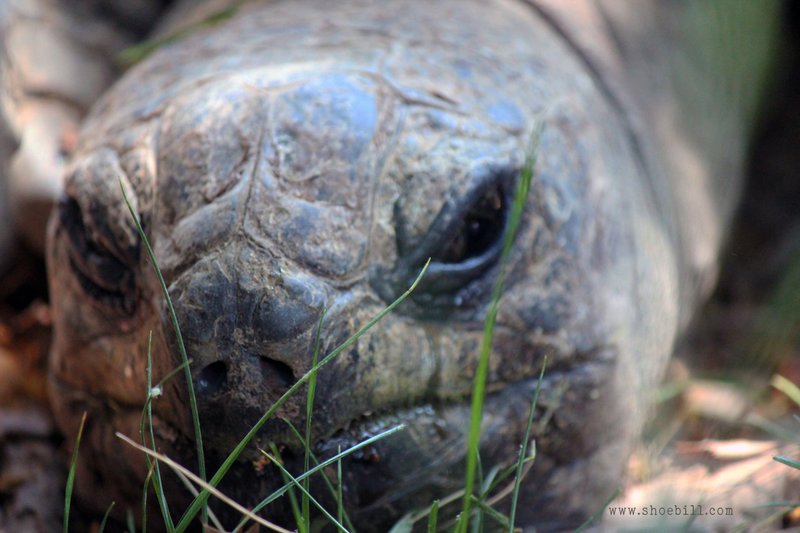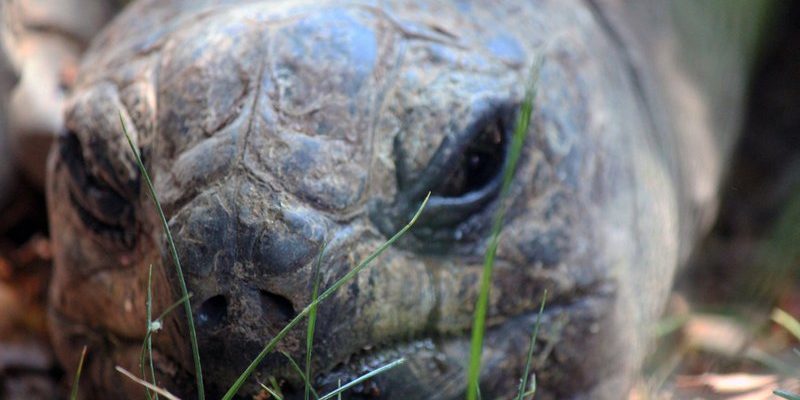
Despite their hefty size, Aldabra tortoises are generally seen as docile and harmless. Yet, like any wild animal, there’s a bit of a wild side waiting to pop up in certain situations. Imagine a massive animal, much like a cow but with a shell, lumbering about its territory. You wouldn’t want to accidentally startle it, right? Let’s dive into the dynamics of the Aldabra giant tortoise and understand what makes them fascinating and, potentially, a bit risky.
Understanding the Nature of Aldabra Giant Tortoises
Aldabra giant tortoises are known for their unique temperament and social structure. These tortoises have a slow-paced lifestyle, which leads many to believe they’re harmless. They primarily feed on grass, leaves, and fruits, spending most of their day grazing. You might see them basking in the sun or wandering in search of food.
However, it’s important to realize that they are still wild animals. They have instincts that can kick in under certain circumstances. For example, if they feel threatened or cornered, they might react in ways that surprise you. They can pull their heads into their shells and even attempt to bite if they feel provoked. It’s crucial to treat them with respect, allowing them to roam freely without imposing your presence too much.
In the wild, these creatures tend to be more peaceful, but in captivity, things can change. They may become territorial, especially around food, which can make interactions a bit tricky. It’s a classic case of “don’t poke the bear”—or in this case, the tortoise!
When Could Aldabra Tortoises Be Dangerous?
While Aldabra tortoises are typically gentle, certain conditions can make them behave unexpectedly. Here are a few scenarios where they might pose a risk to humans:
- Feeling Threatened: If a tortoise perceives a person as a threat, especially when it’s in a corner or trying to reach its food, it might act defensively. This could include lunging or attempting to bite.
- During Mating Season: Like many animals, male tortoises can become aggressive during mating season. Their competitive nature can lead to some heated encounters, especially if they see a rival.
- Handling: When handled improperly, even the gentlest tortoise can react poorly. Sudden movements or loud noises can startle them and lead to defensive behavior.
Understanding these triggers is key. It’s not that Aldabra tortoises are dangerous in nature; it’s about recognizing the moments where their instincts might kick in.
How to Interact Safely with Aldabra Giant Tortoises
If you ever get the chance to interact with an Aldabra giant tortoise, there are ways to do it safely. Remember, patience is essential. Here’s how to ensure you have a pleasant experience without any unwanted surprises:
1. Observe First: Take the time to watch the tortoise. Notice its body language. If it seems relaxed, you can slowly approach. If it’s moving away or retracting into its shell, it’s best to give it space.
2. Approach Calmly: Move slowly and avoid sudden movements. This helps to build trust and shows the tortoise that you mean no harm.
3. Avoid Feeding: While it can be tempting to feed them, it’s best to avoid this unless you’re in a controlled environment where it’s allowed. Feeding not only encourages territorial behavior but can also lead to health issues if the wrong food is given.
4. Respect Their Space: Always keep a safe distance. Even if they seem friendly, maintaining that gap lets them feel secure.
By following these simple guidelines, you can enjoy your time with these fascinating reptiles without encountering any dangerous situations.
Comparing Aldabra Tortoises with Other Species
When it comes to tortoises, there are quite a few different species to consider. Each has its own temperament and behavior traits. Comparing Aldabra tortoises to other known types can give a broader perspective on their nature. For instance:
– Galápagos Tortoises: These also have massive sizes but can be a bit more aggressive than Aldabra tortoises. They have a more diverse diet and can show territorial behaviors more noticeably.
– Red-Footed Tortoises: These smaller tortoises are generally more social and can be friendlier towards humans. They’re less likely to bite but still need proper care and respect.
– Russian Tortoises: While smaller in size, they can be quite feisty. They’re also known for digging, which can lead to unexpected behavior.
Each of these species teaches us that while tortoises might seem slow and harmless, understanding their unique behaviors is crucial. It’s a gentle reminder to respect all wildlife.
Conservation and Human Impact
It’s essential to consider how humans impact these magnificent creatures. Aldabra giant tortoises, while currently stable in the wild, face threats from habitat loss and climate change. Understanding their behavior is vital not only for safety but also for conservation efforts.
By respecting their habitats and advocating for their preservation, we’re doing our part to keep their populations thriving. Tourists and wildlife enthusiasts can play a significant role in educating others about these gentle giants.
Moreover, if you’re passionate about animal welfare, consider supporting organizations that focus on protecting their natural environments. Each little effort counts!
So, can the Aldabra giant tortoise be dangerous to humans? The short answer is yes, but it’s all about the context. Generally, they are gentle and curious creatures, but like all wild animals, they have their limits. Understanding their behavior, respecting their space, and interacting wisely can help us appreciate these beautiful tortoises without putting ourselves in harm’s way.
The fascinating world of the Aldabra giant tortoise is more than just their imposing size; it’s about their unique behaviors and the delicate balance we share with nature. So, next time you think about these gentle giants, remember: they may be slow and unassuming, but they deserve our respect and understanding.

